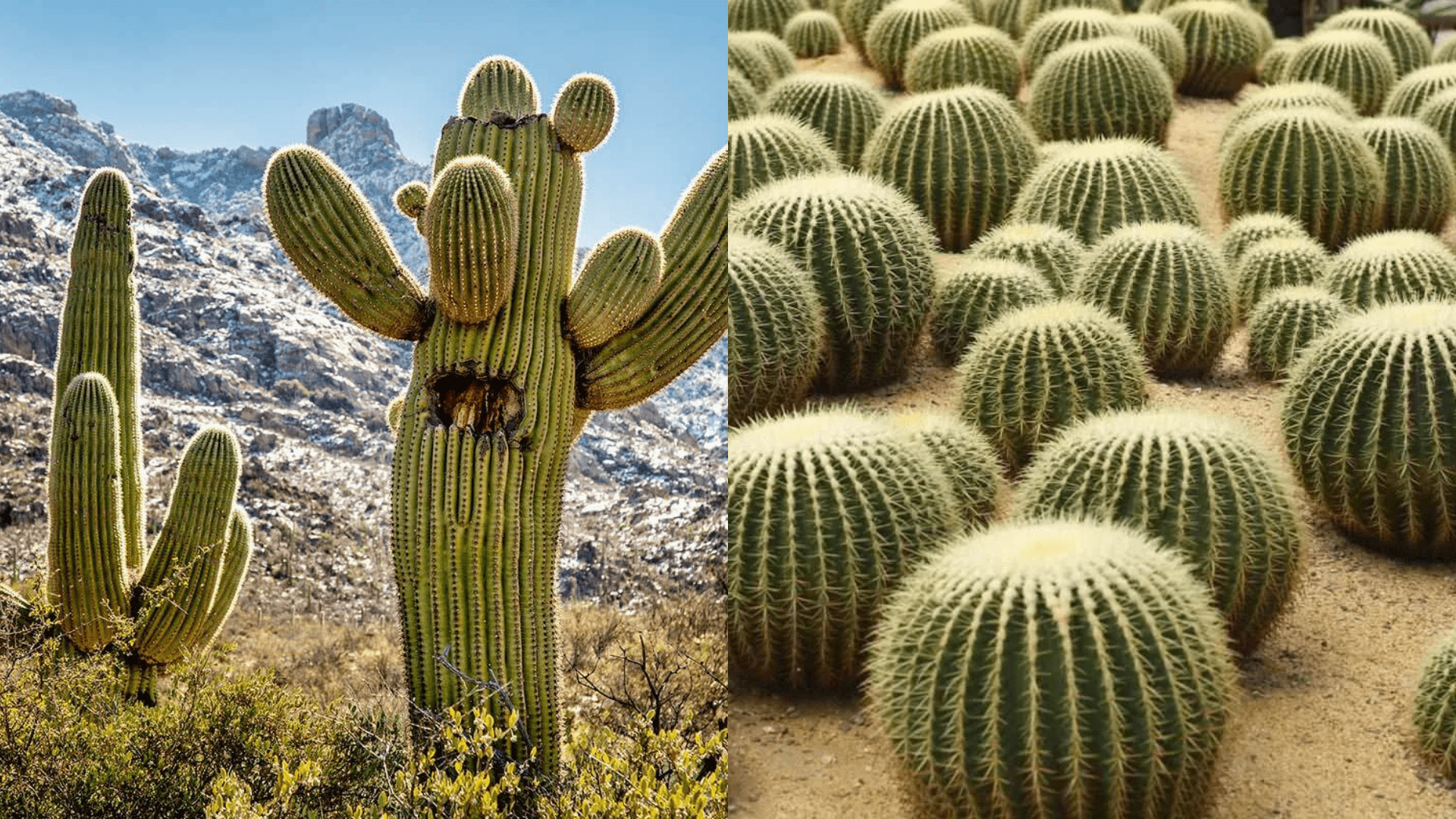Discover the incredible adaptations that enable cacti to thrive in harsh desert environments. Learn about their unique features, structural and behavioral adaptations, and the vital role they play in ecosystems. Explore the fascinating interaction between cactus and wildlife, human uses, and ongoing conservation efforts.
Introduction
Deserts, with their arid landscapes and scorching temperatures, pose a challenging environment for most plants. However, amid the vast stretches of desolation, the cactus stands tall as a symbol of resilience. In this article, we delve into the captivating world of cacti, exploring how these remarkable plants are finely tuned to survive in the harsh conditions of the desert.
Unique Features of Cactus
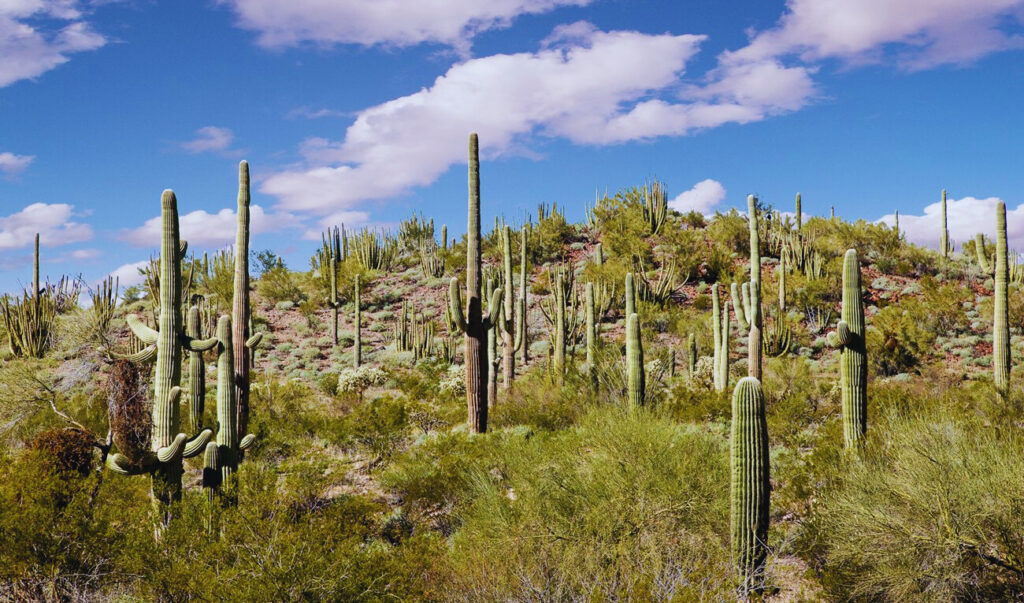
Water Storage Marvels:
Cacti, the resilient inhabitants of arid landscapes, have mastered the art of water storage to survive in the harsh conditions of deserts. These remarkable plants have evolved unique adaptations that allow them to thrive in environments where water is a scarce commodity.
One of the standout features of cacti is their ability to store water in their stems and leaves. Unlike many other plants that struggle in arid climates, cacti act as natural reservoirs, efficiently storing water during periods of rain or high humidity. This stored water becomes a crucial lifeline during extended droughts, allowing cacti to withstand the intense heat and scarcity of water that characterize desert environments.
The specialized cells in the stems and leaves of cacti are designed for maximum water retention. These cells can expand to accommodate the stored water and contract during dry periods, preventing excessive water loss through transpiration. This adaptation not only ensures the survival of the cactus but also positions it as a symbol of resilience in the face of challenging conditions.
In addition to storing water for their own survival, cacti play a vital role in the desert ecosystem by serving as water sources for other organisms. The water stored in their tissues becomes a valuable resource for animals during dry spells, creating a unique and intricate web of life in the desert.
In essence, the water storage marvels of cacti showcase the ingenious ways in which nature equips plants to endure and even thrive in some of the most inhospitable environments on Earth. The next time you marvel at a cactus standing tall in the desert, remember that beneath its prickly exterior lies a reservoir of life-sustaining water, a testament to the adaptability and resourcefulness of these incredible plants.
Modified Leaves for Transpiration Reduction:
In the challenging landscape of the desert, where water is a precious resource, cacti have evolved another ingenious adaptation – modified leaves designed to reduce transpiration. Unlike traditional broad leaves that are prone to water loss through evaporation, cacti have developed spines or modified leaves that serve a dual purpose: protection and water conservation.
The reduced surface area of these modified leaves minimizes the potential for water loss through transpiration. This adaptation is critical for cacti as it allows them to conserve water during the scorching daytime temperatures typical of desert environments. The spines, often mistaken for mere defense mechanisms, play a crucial role in shielding the cactus from excessive sunlight and also contribute to reducing transpiration.
This dual-functionality of modified leaves not only aids in the cactus’s survival but also showcases the plant’s ability to optimize every aspect of its structure for the harsh conditions it faces. The reduced reliance on traditional, water-draining leaves is a testament to the efficiency of nature’s design, where form meets function in perfect harmony.
Deep Root Systems:
Beneath the surface of the desert soil, cacti extend their reach with impressive deep root systems. These roots are not only adept at anchoring the plant firmly in the ground but also play a crucial role in water absorption.
In arid environments where water is often scarce on the surface, cacti have evolved to tap into groundwater reserves. The extensive root systems delve deep into the earth, seeking out hidden pockets of moisture. This ability to access water from deeper layers of the soil is a strategic adaptation that sets cacti apart, allowing them to endure prolonged periods of drought that would be insurmountable for many other plant species.
The combination of water storage in stems and leaves, reduced transpiration through modified leaves, and the efficient water absorption facilitated by deep root systems collectively form a triumphant strategy for cacti in their quest to survive and thrive in the challenging desert landscape. These adaptations not only enable their individual survival but contribute to the broader ecological balance of desert ecosystems.
Structural Adaptations
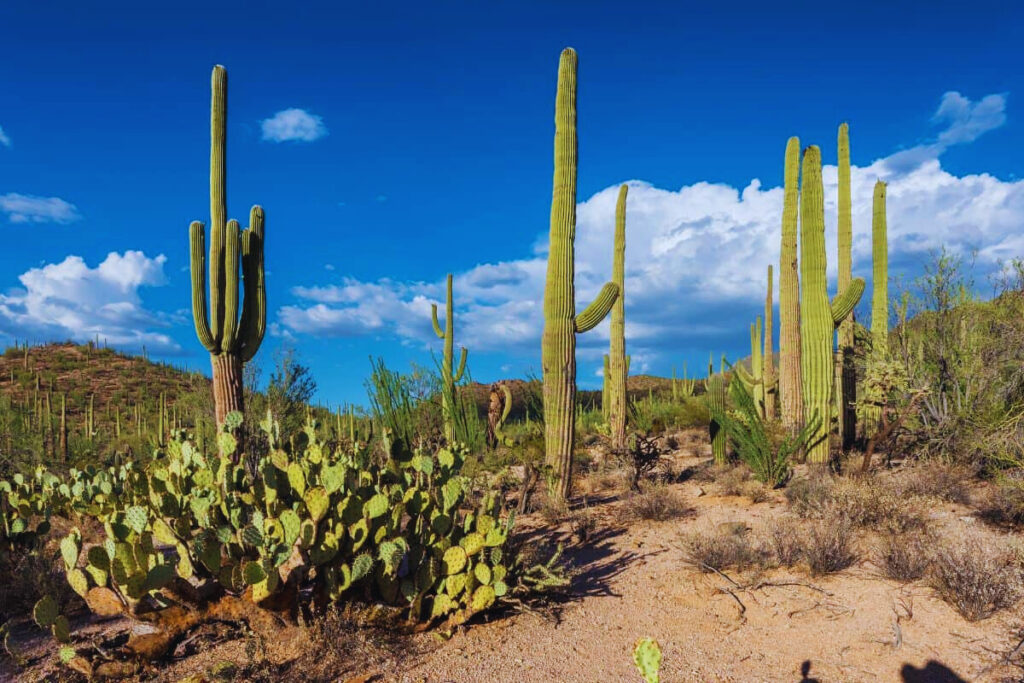
Waxy Coating for Water Conservation:
In the challenging terrain of the desert, where water scarcity is a constant battle, cacti have evolved a remarkable adaptation – a thick waxy coating on their surfaces. This coating serves as a protective shield and plays a pivotal role in water conservation, allowing cacti to thrive in the harsh aridity of their surroundings.
The waxy coating, often referred to as the epicuticular wax layer, is a specialized adaptation designed to minimize water loss through transpiration. This thin, waterproof layer covers the surface of the cactus, creating a barrier that reduces the evaporation of water from the plant’s tissues. As a result, cacti can retain precious moisture, a valuable resource in the arid environments where they flourish.
This adaptation is particularly significant during the scorching daylight hours in the desert. The waxy layer not only acts as a shield against intense solar radiation but also prevents excessive water loss, helping cacti withstand challenging conditions that could otherwise be fatal to most other plant species.
The waxy coating is a prime example of nature’s ingenuity in equipping plants with the tools needed to thrive in extreme environments. In the case of cacti, this adaptation not only ensures their survival in water-scarce landscapes but also contributes to their iconic resilience, making them a symbol of nature’s ability to overcome adversity.
Photosynthesis in Extreme Conditions:
Cacti, resilient inhabitants of the desert, have evolved a remarkable ability to carry out photosynthesis even in the harshest environmental conditions. This vital process, essential for the production of energy and sustenance, showcases the plant’s extraordinary adaptation to extreme climates where water is scarce and temperatures are soaring.
One of the key strategies employed by cacti is their efficient use of sunlight. Despite the intense desert sun, these plants have adapted to capture and utilize sunlight effectively for photosynthesis. The specialized chloroplasts within the cells of their modified leaves and stems are adept at converting sunlight into energy, allowing cacti to thrive in areas where other plants struggle.
Moreover, cacti have developed a unique timing for photosynthesis to cope with the extreme temperatures of the desert. Many cactus species perform photosynthesis primarily during the cooler nighttime hours, reducing water loss through transpiration. This adaptation not only conserves water but also maximizes the efficiency of the photosynthetic process by avoiding the heat stress associated with daytime activities.
The ability of cacti to carry out photosynthesis in extreme conditions highlights the plant’s adaptability to its arid surroundings. By harnessing sunlight efficiently and timing photosynthetic processes strategically, cacti demonstrate nature’s capacity to innovate and thrive even in environments considered inhospitable for most other plant life. This adaptation is a testament to the resilience and survival strategies ingrained in these remarkable desert-dwelling plants.
Camouflage for Protection:
In the challenging ecosystems of the desert, where survival often hinges on the ability to evade herbivores and harsh environmental conditions, cacti have evolved a fascinating adaptation – camouflage. While the term might evoke images of animals blending into their surroundings, certain cactus species have developed features that allow them to seamlessly integrate with the desert landscape for their own protection.
Camouflage in cacti is primarily expressed through coloration and texture. Some cacti exhibit hues that mimic the tones of the surrounding soil and rocks, providing them with a degree of invisibility. This color mimicry aids in concealing the plant from potential herbivores, making it more difficult for them to spot and consume.
The texture of cactus surfaces can also contribute to their camouflage. Some species have evolved patterns or features that break up their silhouette, making them less conspicuous in the arid terrain. This textured camouflage not only serves as a defense against herbivores but also helps these plants blend seamlessly into their surroundings, providing a measure of protection against the harsh desert sun.
Camouflage in cacti is a survival strategy shaped by the relentless pressure of the desert environment. By reducing their visibility to herbivores and minimizing the risk of damage, these plants exemplify nature’s ingenious solutions for thriving in challenging ecosystems. The camouflage adaptation of cacti is a testament to the intricate dance between plants and their environments, where strategies for protection are as diverse and fascinating as the desert landscapes they call home.
Behavioral Adaptations
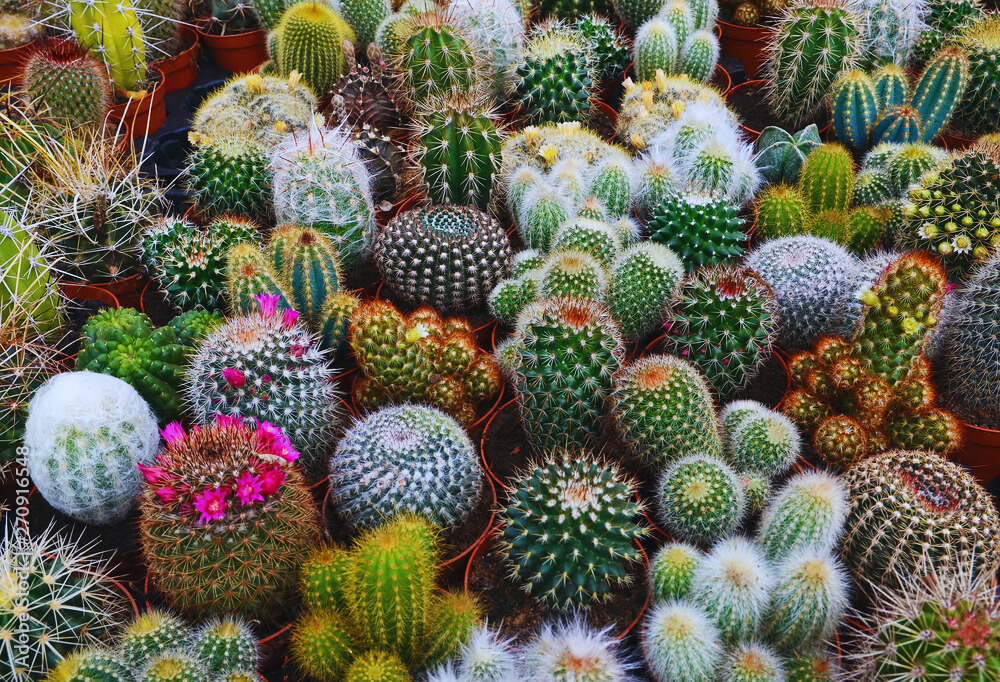
Nighttime Blooming and Closed Stomata
In the intricate dance of survival in the desert, cacti have choreographed a unique performance that unfolds during the cool, mysterious hours of the night. One of their standout adaptations is the practice of nighttime blooming, coupled with the strategic closure of stomata during the day. These botanical maneuvers serve as a testament to the resourcefulness of cacti in optimizing their life processes to thrive in the challenging desert environment.
Nighttime Blooming:
Many cactus species have evolved to bloom under the cover of darkness, a behavior that might seem counterintuitive at first glance. However, this nighttime spectacle is a deliberate strategy to cope with the extreme temperatures of the desert. By flowering during the cooler night hours, cacti reduce the risk of water loss through transpiration, as the lower temperatures limit evaporation. This adaptation allows the plants to conserve precious moisture while taking advantage of the darkness to attract nocturnal pollinators such as bats and moths.
Closed Stomata During the Day:
Stomata, tiny pores on the surface of leaves and stems, play a crucial role in regulating gas exchange and water loss in plants. Cacti have evolved the ability to keep their stomata closed during the day, minimizing water loss through transpiration. This daytime closure is another strategy to conserve water in the face of the intense desert sun. By restricting the opening of stomata when temperatures are at their peak, cacti reduce the risk of dehydration and ensure their survival in arid conditions.
The synchronized dance of nighttime blooming and closed stomata showcases the intricate adaptations cacti have developed to navigate the challenges of their desert habitats. By embracing the coolness of the night and strategically managing their stomatal activity, these plants have mastered the art of water conservation, a key factor in their resilience against the harsh conditions of the desert.
Dormancy Strategies
In the face of prolonged droughts and extreme environmental conditions, cacti have evolved a fascinating survival strategy – dormancy. This adaptive mechanism allows them to enter a state of dormancy, a temporary period of reduced metabolic activity, to conserve energy and resources until more favorable conditions return.
Conserving Energy During Drought:
Dormancy in cacti is typically triggered by extended periods of drought when water availability becomes severely limited. During this challenging period, the cactus slows down its metabolic processes, effectively conserving energy that would otherwise be expended on growth and maintenance. By entering a state of dormancy, the cactus minimizes its physiological activities, ensuring that it can withstand the scarcity of water without depleting its vital resources.
Preserving Water Reserves:
One of the primary goals of dormancy is to preserve the cactus’s water reserves. As the plant reduces its metabolic rate, the need for water decreases. This adaptive response helps the cactus endure long stretches of aridity without succumbing to dehydration. By conserving water through dormancy, cacti have honed a survival strategy that allows them to endure the harshest conditions of the desert.
Timing and Triggering Dormancy:
The timing and triggering of dormancy are finely tuned processes that vary among different cactus species. Some cacti enter dormancy during the hottest months of the year when water is most scarce, while others may respond to specific environmental cues such as temperature or daylight duration. This flexibility in dormancy strategies reflects the adaptability of cacti to diverse desert environments.
Dormancy in cacti is not a sign of weakness but rather a testament to their resilience and ability to thrive in the face of adversity. By strategically conserving energy and water during challenging times, cacti exemplify the intricate dance between survival instincts and environmental dynamics, showcasing the remarkable strategies that have allowed them to flourish in some of the planet’s most inhospitable landscapes.
Crassulacean Acid Metabolism (CAM)
In the intricate world of desert adaptations, cacti boast a fascinating metabolic strategy known as Crassulacean Acid Metabolism (CAM). This innovative process enables these resilient plants to thrive in arid environments, showcasing a remarkable ability to optimize their use of water and photosynthesis.
Unique Photosynthetic Pathway:
CAM is a photosynthetic pathway that differs from the more common C3 and C4 pathways found in many plants. What sets CAM apart is its temporal separation of carbon dioxide uptake and the actual process of photosynthesis. Unlike C3 plants that perform both processes simultaneously during the day, cacti employing CAM open their stomata at night to take in carbon dioxide, storing it in the form of organic acids.
Nighttime Stomatal Opening:
Cacti strategically open their stomata during the cooler nighttime hours. This timing reduces water loss through transpiration, as the relative humidity is higher during the night. By taking in carbon dioxide when temperatures are lower and humidity is higher, cacti efficiently minimize water loss while preparing for the subsequent daylight photosynthesis.
Daytime Photosynthesis:
During the day, when temperatures are high and the risk of water loss through transpiration is elevated, cacti keep their stomata closed. This closure prevents excessive water loss while allowing the plant to perform photosynthesis using the stored carbon dioxide from the previous night. This temporal separation of processes is a unique adaptation that enhances water-use efficiency, a critical factor for survival in arid climates.
Advantages in Arid Environments:
CAM photosynthesis provides cacti with a significant advantage in water conservation. By opening stomata at night and closing them during the day, cacti can effectively minimize water loss without compromising their ability to produce energy through photosynthesis. This adaptation is a testament to the ingenuity of nature, allowing cacti to thrive in regions where water is a scarce and precious resource.
The implementation of Crassulacean Acid Metabolism in cacti exemplifies the plant kingdom’s ability to evolve innovative strategies for survival. This metabolic pathway not only contributes to the adaptability of cacti but also underscores the intricate interplay between environmental challenges and the biological solutions that have enabled these plants to flourish in some of the most demanding ecosystems on Earth.
Cactus and Wildlife Interaction
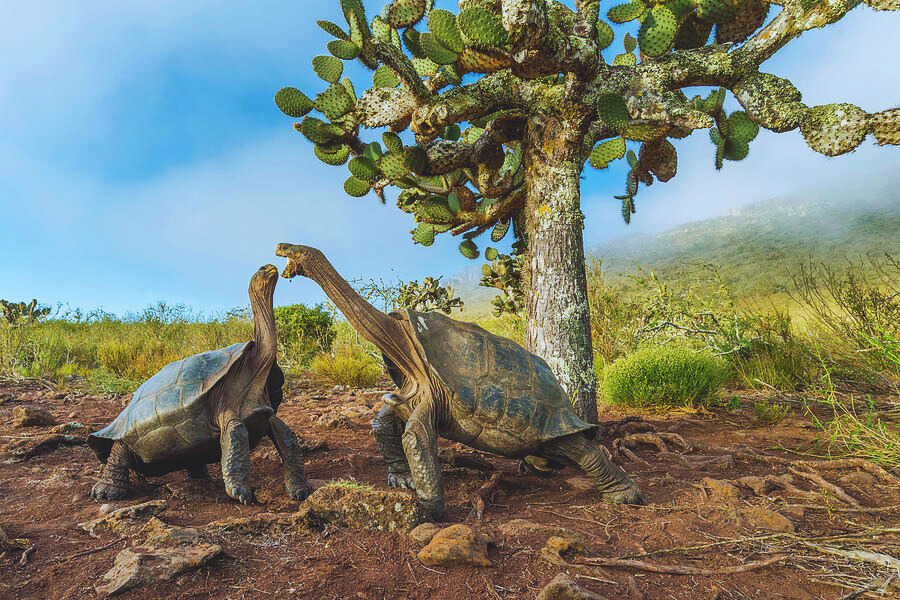
Water Source for Animals
In the seemingly inhospitable landscapes of the desert, cacti play a vital role beyond their own survival – they serve as a crucial water source for a variety of animals. This symbiotic relationship underscores the interconnectedness of desert ecosystems, highlighting the importance of cacti in sustaining life in arid environments.
Reservoirs in the Desert:
Cacti, with their adept water storage capabilities, act as living reservoirs in the desert. The moisture stored in their tissues becomes a lifeline for animals during times of drought when water is scarce across the barren landscape. The availability of water in cacti becomes particularly essential for animals that have limited access to alternative water sources.
Nectar as an Attraction:
Beyond providing direct hydration, some cacti produce nectar, an additional attractant for animals. In seeking this sweet liquid, animals inadvertently assist in pollination, fostering a mutually beneficial relationship. This dynamic interaction demonstrates the intricate balance of survival strategies in the desert, where both flora and fauna rely on each other for sustenance.
Diverse Beneficiaries:
A wide range of animals benefits from cacti as a water source. From insects and birds to mammals like rodents and bats, the availability of water in cacti contributes to the biodiversity of the desert ecosystem. These animals have adapted to leverage the resources provided by cacti, showcasing the remarkable resilience and versatility of life in the desert.
Role in Migration and Survival:
For migratory animals crossing vast desert expanses, the presence of cacti can be a lifesaver. The strategic distribution of cacti along migration routes becomes crucial, offering pitstops where animals can replenish their water supply. In this way, cacti contribute not only to the day-to-day survival of local fauna but also play a role in supporting the broader movements and migrations of wildlife.
The role of cacti as a water source for animals exemplifies the intricate web of dependencies in the desert. Beyond their physical adaptations for survival, cacti become providers of sustenance and hydration for a diverse array of creatures. This harmonious relationship paints a vivid picture of the interconnectedness that defines life in one of Earth’s most challenging ecosystems.
Mutualistic Relationships
In the seemingly harsh and barren landscapes of the desert, cacti engage in fascinating mutualistic relationships with various animal species, highlighting the intricate balance of life in these challenging environments. These symbiotic partnerships underscore the adaptability and resilience of both cacti and their animal counterparts.
Bats as Pollinators:
One of the notable mutualistic relationships involves bats as pollinators. Certain cactus species, such as the saguaro cactus, open their flowers at night, aligning with the nocturnal activity of bats. These bats, in search of nectar, inadvertently transfer pollen from one flower to another, facilitating the cactus’s reproductive process. In return for the sweet reward, the bats contribute to the continuation of the cactus species, showcasing a mutually beneficial arrangement.
Insects and Nectar Collection:
Insects, including bees and butterflies, are frequent visitors to cactus flowers in search of nectar. As they feed on the nectar, they inadvertently transport pollen between flowers, aiding in pollination. This relationship benefits both parties – the insects receive sustenance, and the cacti achieve successful reproduction. The coevolution of cacti and their insect pollinators highlights the intricate adaptations that contribute to the survival of both.
Rodents and Seed Dispersal:
Certain desert rodents play a role in the dispersal of cactus seeds. As they consume the fleshy fruits of cacti, they unwittingly transport the seeds to different locations. The seeds, in turn, benefit from being spread across the landscape, increasing their chances of finding suitable conditions for germination. This mutually beneficial interaction enhances the reproductive success of the cacti while providing a food source for the rodents.
Birds and Nesting Sites:
Birds, particularly those seeking shelter and nesting sites, often find refuge in the protective arms of cacti. The unique structure of cacti, with their thorns and dense growth patterns, offers a secure habitat for birds to build nests and rear their young. In return, the cacti benefit from the activities of birds, as fallen nest material may contribute to soil fertility, promoting the growth of new vegetation.
These examples of mutualistic relationships in the desert illustrate the interconnectedness of life forms, each contributing to the well-being and survival of the other. In the challenging environment of the desert, where resources are scarce, these partnerships exemplify the adaptability and cooperation that define the intricate tapestry of life in arid ecosystems.
Human Uses of Cactus
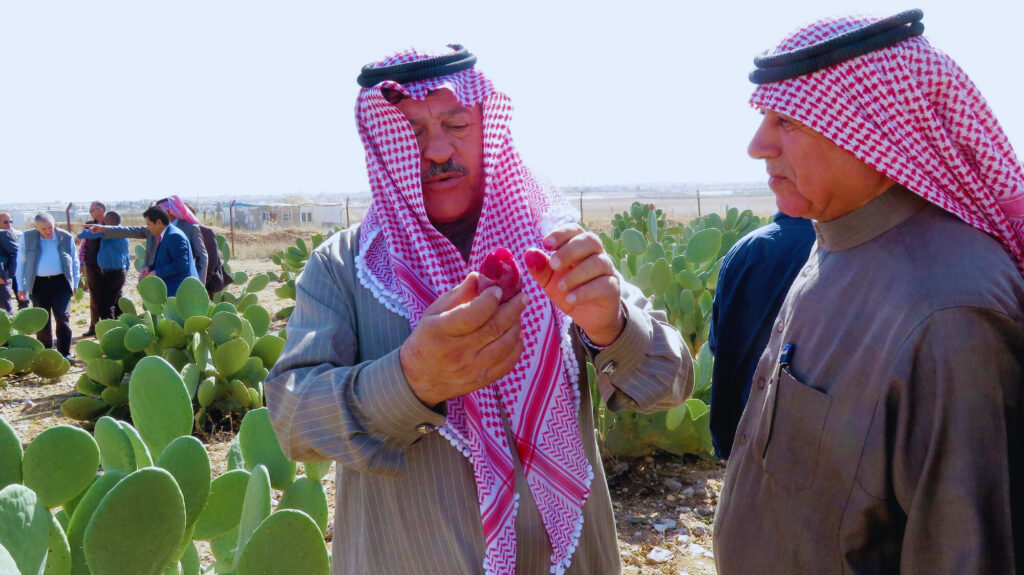
Traditional Medicinal Applications
Beyond their ecological significance, cacti have played a crucial role in traditional medicine for various indigenous communities, particularly those residing in arid regions. The unique properties of certain cactus species have been harnessed for generations, offering remedies for various ailments and showcasing the rich cultural heritage of these communities.
Aloe Vera for Skin Healing:
Aloe vera, a succulent plant often categorized within the broader cactus family, has been a staple in traditional medicine for its healing properties. The gel found in the leaves of the aloe plant is known for its soothing effects on the skin. It has been traditionally used to treat burns, wounds, and skin irritations, providing a natural and accessible remedy for various dermatological issues.
Prickly Pear for Diabetes Management:
The prickly pear cactus, scientifically known as Opuntia, has been employed in traditional medicine for its potential benefits in managing diabetes. Some studies suggest that the consumption of prickly pear extracts may help lower blood sugar levels. While further research is ongoing, the traditional use of prickly pear as a diabetes remedy reflects the deep knowledge indigenous communities have developed over time.
Saguaro Cactus for Hydration:
Indigenous peoples of the Sonoran Desert have long utilized the saguaro cactus as a source of hydration. The ripe fruits, often referred to as saguaro fruit, are rich in fluids and essential nutrients. Traditional communities would harvest and consume these fruits to quench thirst and replenish vital minerals, showcasing the resourcefulness of utilizing native flora for survival in challenging environments.
Peyote for Spiritual and Medicinal Practices:
Peyote, a small, spineless cactus found in North America, holds cultural and medicinal significance for indigenous communities such as the Native American Church. Traditionally used in spiritual ceremonies, peyote is believed to have both medicinal and psychoactive properties. The plant has been incorporated into traditional healing practices for its perceived ability to induce altered states of consciousness and promote spiritual insight.
These examples highlight the diverse ways in which cacti have been integrated into traditional medicine, serving as valuable resources for communities navigating the challenges of arid environments. While these traditional applications are deeply rooted in cultural practices, it’s essential to approach the use of cacti with respect for both the ecological balance and the cultural heritage of the communities that have long relied on these plants for health and well-being.
Culinary Marvels
Cacti, often associated with the arid landscapes of the desert, reveal a surprising dimension beyond their resilient survival strategies – they offer a range of culinary delights that have been embraced by various cultures for centuries. From savory dishes to sweet treats, cacti have found a place in the kitchens of those who have learned to appreciate the unique flavors and textures these plants bring to the table.
Nopalitos in Mexican Cuisine:
One of the culinary marvels derived from cacti is the use of nopalitos, the young pads of the prickly pear cactus. Common in Mexican cuisine, nopalitos are known for their crisp texture and slightly tangy flavor. Whether sautéed, grilled, or added to salads, these cactus pads bring a refreshing and nutritious element to dishes. Rich in fiber, vitamins, and antioxidants, nopalitos have become a versatile and healthful addition to a variety of meals.
Prickly Pear in Refreshing Treats:
The vibrant and juicy fruits of the prickly pear cactus, also known as tunas, are celebrated for their sweet and mildly tangy taste. In many cultures, these fruits are enjoyed fresh or transformed into refreshing beverages, jams, and sorbets. Prickly pear adds a burst of color and flavor to culinary creations, making it a popular choice for those seeking a unique and exotic taste experience.
Saguaro Fruit for Indigenous Treats:
The saguaro cactus, iconic in the Sonoran Desert, produces sweet and pulpy fruits that have been historically harvested by indigenous communities. The saguaro fruit, often used in traditional recipes, can be made into jams, syrups, and even fermented beverages. Its sweet taste and rich nutritional profile make it a valued ingredient in the culinary traditions of the desert-dwelling peoples.
Dragon Fruit – A Global Sensation:
While not a true cactus but commonly associated with the family, dragon fruit, also known as pitaya, has gained global popularity for its exotic appearance and subtly sweet taste. The white or red-fleshed varieties are enjoyed fresh, added to fruit salads, or blended into smoothies. Dragon fruit’s versatility and nutritional benefits have made it a culinary marvel embraced by chefs and home cooks worldwide.
These culinary applications of cacti showcase the diverse and delectable offerings that arise from these seemingly inhospitable plants. As the world continues to explore and appreciate the culinary marvels of cacti, it becomes evident that these resilient plants have much more to offer than meets the eye, adding unique flavors and nutritional value to global gastronomy.
Conservation Efforts
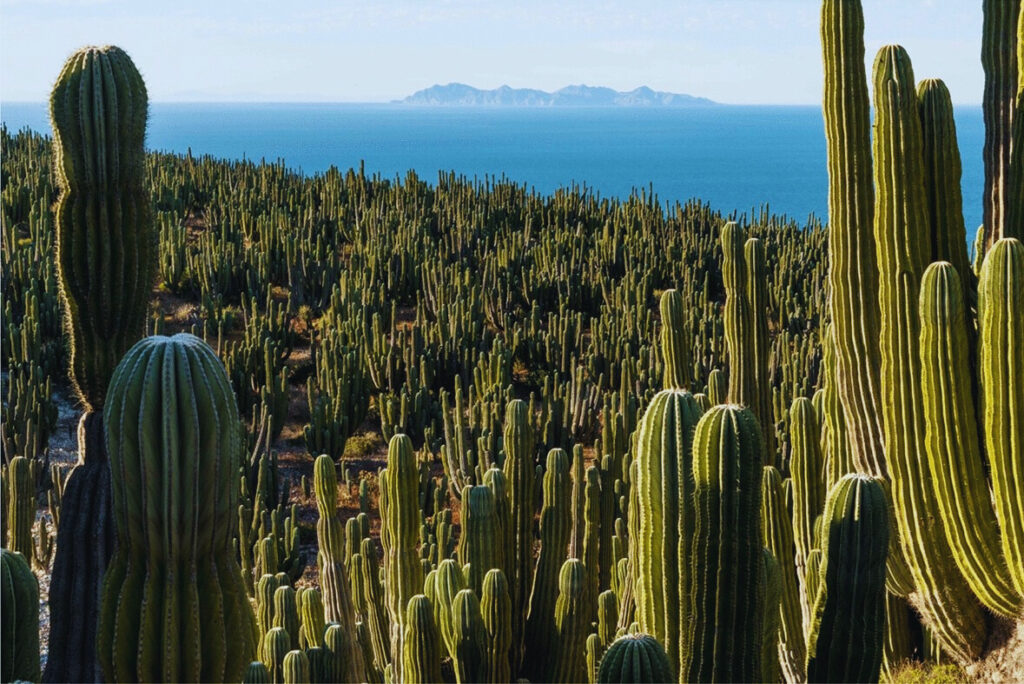
Threats to Cactus Populations
While cacti have demonstrated remarkable adaptability to harsh desert environments, their survival is increasingly challenged by various threats, both natural and human-induced. Understanding these challenges is crucial for implementing conservation efforts to ensure the longevity of these unique and ecologically significant plants.
1. Habitat Loss and Urbanization:
One of the primary threats to cactus populations is the loss of their natural habitats due to urbanization, agriculture, and infrastructure development. As human activities expand into arid regions, cacti face increased pressure, leading to habitat fragmentation and destruction. This disrupts their ecological balance and diminishes the areas where these plants have evolved to thrive.
2. Climate Change and Altered Rainfall Patterns:
Cacti are highly adapted to specific climatic conditions, and alterations in temperature and precipitation patterns associated with climate change pose a significant threat. Extended droughts, extreme temperatures, and changes in rainfall can affect the ability of cacti to survive and reproduce, putting entire populations at risk.
3. Overharvesting for Commercial Use:
Certain cactus species are harvested for various commercial purposes, including the ornamental plant trade, traditional medicine, and culinary applications. Overharvesting, often driven by high demand, can deplete cactus populations, particularly those with slow growth rates and low reproductive capacities.
4. Invasive Species and Competition:
The introduction of invasive plant species poses a threat to native cacti by competing for resources such as water, nutrients, and sunlight. Invasive plants can outcompete cacti, leading to reduced growth, reproduction, and overall fitness of native populations.
5. Illegal Collection and Trade:
The illegal collection of rare and endangered cactus species for trade in the horticultural market poses a serious threat. Unregulated harvesting of cacti, especially those coveted for their unique characteristics, can result in population declines and even extinction in the wild.
6. Disease and Pathogens:
Cacti are susceptible to diseases caused by bacteria, fungi, and viruses. As habitats become more disturbed and fragmented, the spread of diseases among cacti can be facilitated. Pathogens can weaken and potentially wipe out entire cactus populations.
7. Livestock Grazing:
In some regions, overgrazing by livestock can pose a threat to cacti. Trampling and consumption of cacti by animals reduce their abundance and limit the regeneration of populations, impacting the overall health of these plants.
Addressing these threats to cactus populations requires a concerted effort involving conservation initiatives, habitat protection, sustainable harvesting practices, and public awareness. By recognizing and mitigating these challenges, we can contribute to the preservation of these unique and ecologically valuable plants for future generations.
Conservation Initiatives for Cacti
Recognizing the critical need to protect and preserve cacti in the face of various threats, several conservation initiatives have been undertaken worldwide. These efforts aim to safeguard the diversity, ecological significance, and cultural value of cactus populations. Here are some key conservation initiatives:
1. Habitat Protection and Restoration:
Conservation organizations work to identify and protect critical cactus habitats. This involves establishing and maintaining protected areas, such as national parks and reserves, where cacti can thrive undisturbed. Additionally, initiatives focus on restoring degraded habitats to enhance the resilience of cactus populations.
2. Community-Based Conservation:
Involving local communities in cactus conservation is vital. Initiatives often collaborate with indigenous peoples and local communities, recognizing their traditional knowledge and practices. Engaging communities in sustainable harvesting practices and providing alternative livelihoods helps ensure the long-term coexistence of people and cacti.
3. Research and Monitoring Programs:
Scientific research plays a crucial role in understanding the ecology, biology, and threats faced by cacti. Conservation initiatives often support research projects to gather data on cactus populations, monitor changes over time, and assess the impact of various threats. This knowledge informs effective conservation strategies.
4. Ex Situ Conservation and Seed Banks:
To safeguard cactus species facing immediate threats, some initiatives establish ex situ conservation programs. This involves cultivating and maintaining cacti outside their natural habitat, often in botanical gardens or specialized facilities. Seed banks are also established to preserve genetic diversity and provide a resource for future restoration efforts.
5. Education and Awareness Campaigns:
Raising awareness about the importance of cacti and the threats they face is a key component of conservation initiatives. Educational programs, workshops, and outreach activities help communities, policymakers, and the public understand the ecological value of cacti and inspire action for their conservation.
6. Legislative Protection and Policies:
Advocacy efforts are directed toward the development and enforcement of laws and policies that protect cacti and their habitats. This includes designating species as protected, regulating trade, and implementing measures to prevent illegal collection and habitat destruction.
7. International Collaboration:
Cactus conservation often requires collaboration across borders. Initiatives work on regional and international levels to share knowledge, coordinate conservation efforts, and address global challenges such as climate change and invasive species that impact cacti across multiple countries.
8. Sustainable Harvesting Practices:
For cacti used in traditional medicine, culinary applications, or the ornamental plant trade, conservation initiatives promote sustainable harvesting practices. This involves setting guidelines for responsible harvesting, ensuring fair trade practices, and promoting cultivation over wild collection where applicable.
By combining these various conservation strategies, initiatives strive to ensure the continued survival and well-being of cacti, recognizing their ecological importance and cultural significance. As awareness grows and collaborative efforts intensify, there is hope for a future where these unique desert plants thrive in their natural habitats.
Conclusion
In conclusion, the adaptability of cacti to desert environments is a marvel of nature. From water storage innovations to behavioral strategies, these plants have carved out a niche in one of the Earth’s harshest landscapes. As we marvel at their resilience, let’s also recognize the importance of conserving these botanical wonders for the benefit of ecosystems and future generations.
Read also: How Are Flood Plains Formed: Nature’s Engineering Marvels
FAQs
Q: Are all cacti found in deserts?
Cacti are predominantly found in deserts, but some species have adapted to other environments like rainforests and grasslands.
Q: How do cacti survive extreme temperatures in the desert?
Their water storage abilities, reduced transpiration, and behavioral adaptations like nighttime blooming contribute to their survival in extreme temperatures.
Q: Can you grow cacti in non-desert regions?
Yes, many cacti are suitable for cultivation in non-desert regions, provided they receive proper care and well-draining soil.
Q: What is the lifespan of a cactus?
Cactus lifespan varies, but some species can live for several decades, even centuries, under favorable conditions.
Q: Are all cacti prickly?
While many cacti have spines, some are spineless or have soft spines, making them less prickly.
Q: How can I contribute to cactus conservation?
Supporting conservation organizations, avoiding illegal trade, and promoting awareness about the importance of cactus ecosystems are effective ways to contribute.
